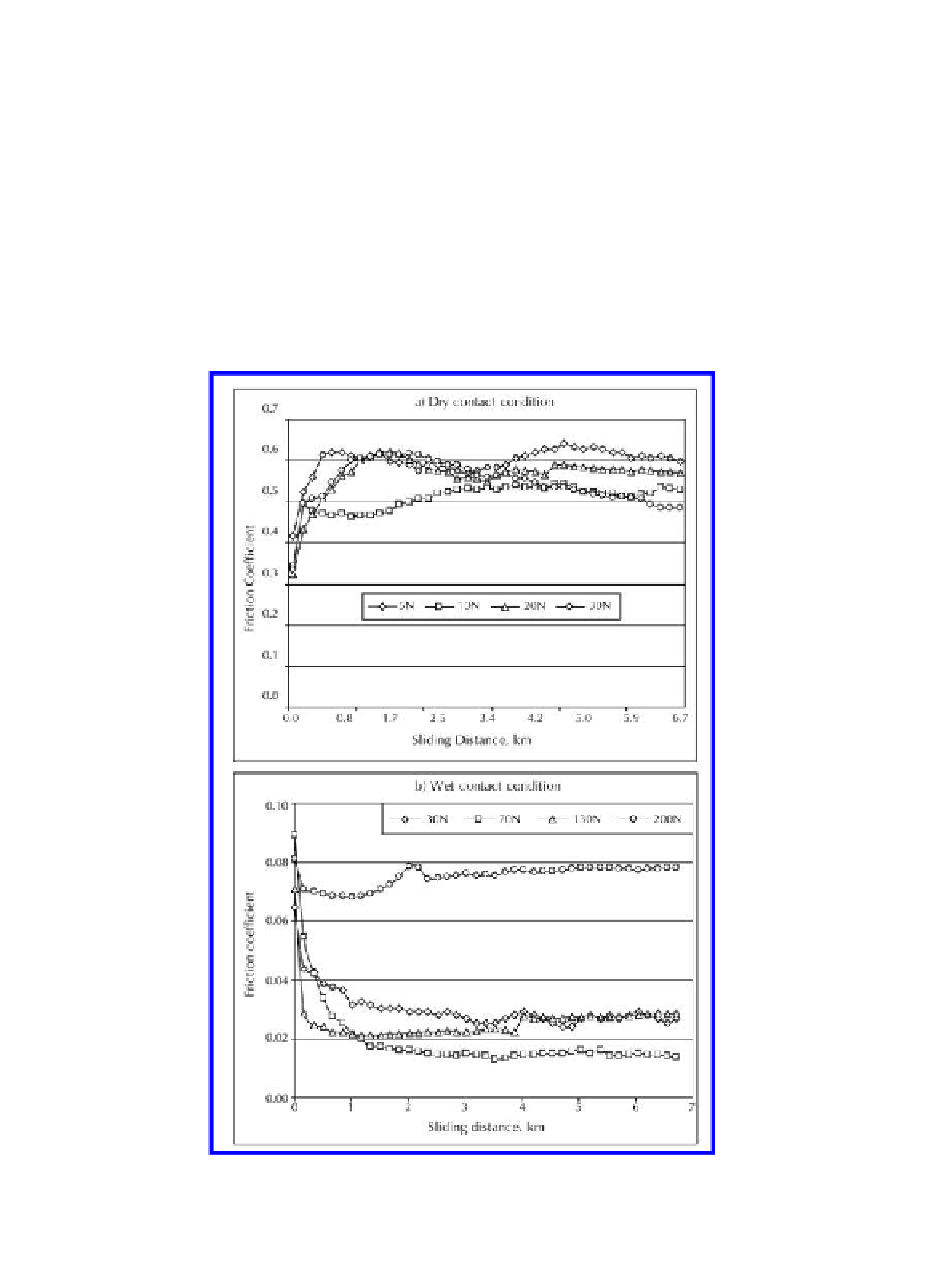Biomedical Engineering Reference
In-Depth Information
Frictional Performance of t-BFrP Composite
The frictional performance of T-BFRP composite at different applied loads against
sliding distances is presented in Figure 7 under dry/wet contact conditions. In general,
Figure 7(a) shows that T-BFRP composite exhibits lower friction coefficient values
approximately in the range of 0.4-0.7 at all applied loads. Figure 7(b) however shows
a tremendous drop in friction coefficient values as compared to the dry test. One can
see that the friction coefficient values were in the range of 0.01 ~ 0.08 respectively.
The drastic reduction in friction coefficient under wet contact condition is due to the
presence of water at the interface which assisted to wash away the generated wear de-
bris and to reduce the interaction between asperities in contact during sliding. Similar
results were reported on polyester composites based on glass fiber (Yousif and El-Tayeb,
2007b, 2008b).
Figure 7.
Friction coefficient of T-BFRP composite
vs.
sliding distance at different applied loads and
2.8 m/s sliding velocity under dry/wet contact conditions.

Search WWH ::

Custom Search